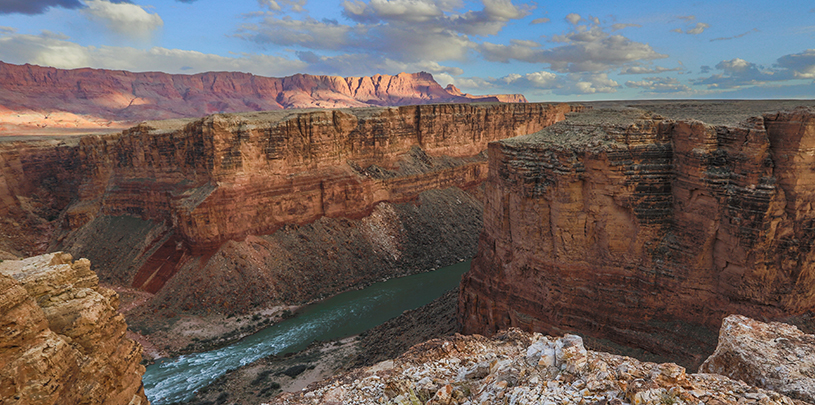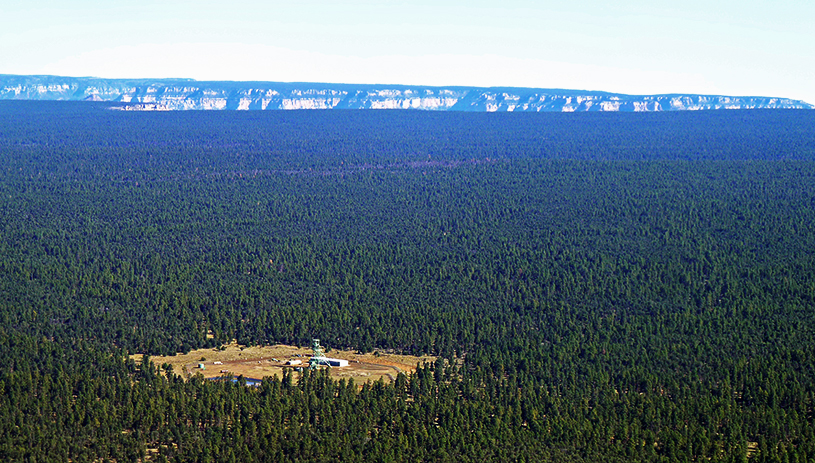
 by Amber Reimondo, Energy Director
by Amber Reimondo, Energy Director
Five months after declaring its intent to sue, Arizona’s state legislative leadership, along with Mohave County and the towns of Fredonia and Colorado City, filed a lawsuit attempting to invalidate the new Baaj Nwaavjo I’tah Kukveni – Ancestral Footprints of the Grand Canyon National Monument. A Utah rancher has filed a separate but similar lawsuit.
In December 2023, the Associated Press called the monument’s designation "one of the most joyous moments of 2023" noting that it "made people feel hopeful."

Nevertheless, the lawsuit filed by the Arizona state senate president and others likens the monument designation to the Norman Conquest and the British crown’s declaration of royal forests, reserved "solely for the king’s royal diversion."
The legislators allege that the national monument blocks uranium mining that would benefit local and state governments and schools and also claim that the monument endangers Arizona’s access to nuclear fuel while overstating the potential of the region to provide that fuel.
And — ironically — the complaint claims that dealing with issues raised by the monument will waste the time and resources of the state legislature. In reality, the lawsuit itself, filed by a private firm based in Missouri, is a waste of taxpayer money.
Baaj Nwaavjo I’tah Kukveni National Monument was proposed by 13 regional Native American tribes to protect their homelands and the majority of Arizona voters of all political parties supported the idea. The monument couldn’t be further from a royal decree by a king; it is supported by the majority of Arizona voters who will be able to provide input and make their voices heard in the management planning process for the monument.

The Antiquities Act empowers the president to protect, among other things, "objects of historic or scientific interest" on federal land as national monuments. President Biden’s proclamation establishing Baaj Nwaavjo I’tah Kukveni National Monument names numerous petroglyphs, pictographs, burial sites, and other cultural resources, along with geological features, discrete landscapes and ecosystems, and plant and animal species as objects to be protected by the monument.
Every court that has addressed this issue has determined that such things are protectable as "objects of historic or scientific interest" under the Antiquities Act. And the proclamation made sure that, as the law requires, the amount of federal land included in the new monument is the "smallest area compatible with the proper care and management" of those objects.

Mining proponents have long claimed that uranium mining would bring significant financial benefit to taxpayers. Unfortunately, because of the General Mining Law of 1872, which was devised to encourage mineral development and Anglo-European colonization of the West and hasn’t been substantively revised since it was passed more than 150 years ago, hardrock mines like uranium mines do not pay royalties. Miners get to take and sell publicly owned minerals for free. That means that any financial benefit uranium mining could provide to local governments or schools would be limited to the same tax contributions that any business provides.
And if we’re comparing the longevity of businesses in northern Arizona, breccia pipe uranium mines like the controversial Canyon Mine (renamed Pinyon Plain Mine), with typical operating life expectancies of just two to five years, don’t hold a candle to the tourism and recreation revenues contributed by the millions of visitors drawn to the Grand Canyon region annually, year after year. Breccia pipe mines also employee very few people. Compare that to 2022 alone, when Grand Canyon visitors spent more than $750 million in local communities, supporting nearly 10,000 jobs and $1 billion in economic output.
Uranium mining in the Grand Canyon landscape only threatens a flourishing outdoor and tourism economy while endangering groundwater, cultural resources, and much more within the national monument itself.

Uranium is one of the most common minerals in the Earth’s crust, but it’s relatively rare in quantities suitable for mining. Just because uranium exists does not mean you can get to it, or profitably mine it. The United States is home to around just 1% of global uranium deposits thought to be mineable. Of that 1%, the Grand Canyon region and specifically Baaj Nwaavjo I’tah Kukveni National Monument, contain only about 1.2% of uranium deposits estimated to be accessible nationwide. If you’re doing the math, that’s 0.01% of global uranium deposits.
Pinyon Plain Mine, which locked up public land for 38 years before it began mining in December 2023, will produce just 1.57 million pounds of uranium oxide (aka yellowcake) over its expected 28-month lifespan. That uranium will have to be further enriched before it can become nuclear fuel. That’s because the nuclear fuel nuclear power plants need can only use one isotope of uranium: uranium 235. But yellowcake is 99.3% uranium 238 and only 0.7% uranium 235. That means that by the end of its life, Pinyon Plain Mine will have produced about 11,000 pounds of the isotope used in nuclear fuel rods.
The state’s lawsuit claims that the monument, by blocking access to uranium, puts the power supply at risk, since a significant chunk of Arizona’s electricity comes from nuclear power. Let’s look at the numbers.
Arizona has one nuclear power plant: Palo Verde. Palo Verde has three reactors with a combined electric capacity of 4,200 megawatts. About 27 tonnes of uranium 235 are needed each year to fuel a 1,000 megawatt reactor of the sort used at Palo Verde, which means Palo Verde needs something like 113 tonnes (or 249,122 pounds) of uranium 235 each year to operate. That means the approximately 11,000 pounds of uranium 235 ultimately produced by Pinyon Plain Mine could supply only about 4% of what Palo Verde requires in a single year. And if Pinyon Plain Mine is any example, imagine the number of mines needed to make a dent in even a single year’s worth of the Palo Verde nuclear plant’s demand.
Looking at the facts, the idea that the uranium deposits within the national monument could fulfill nuclear fuel demand for even the single nuclear plant in Arizona is yet another overstatement, and one that overlooks the long legacy of contamination caused by past uranium mining in the region and its devastating effects on the local environment and communities, especially across the Navajo Nation.
If the Arizona state legislature is concerned about wasting valuable time and resources over the monument, it can start by looking at its own lawsuit.
The Colorado River below Glen Canyon Dam is heating up. Find out why.
Read MoreGroundwater pumping at a uranium mine near the Grand Canyon will affect the canyon's springs, scientists says.
Read MoreArizona Governor Katie Hobbs is the latest elected official to call for an environmental review of Pinyon Plain uranium mine.
Read More